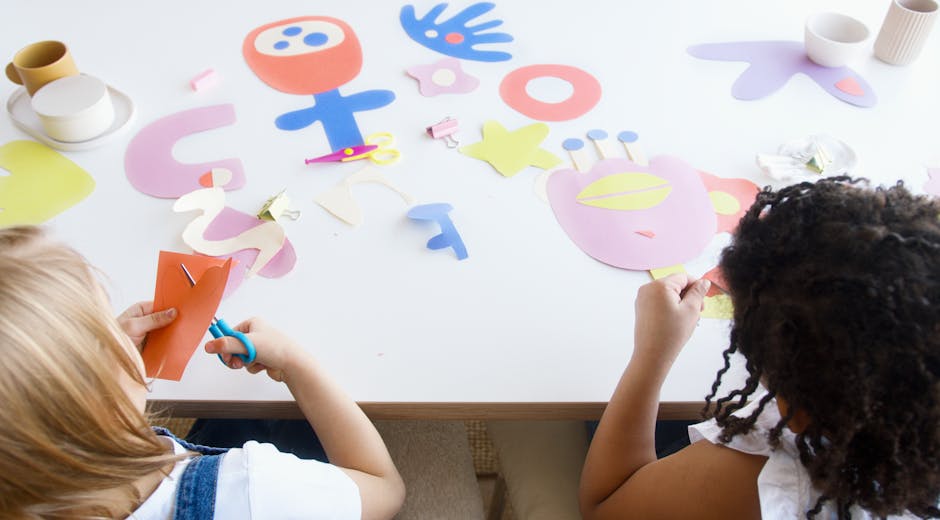In a world where even the textbooks have gone global, it’s no wonder that our education systems are feeling the pressure to keep up with the ever-evolving beast known as globalization. From multicultural classrooms to online learning platforms that make the world your oyster (or at least your virtual classroom), the influence of globalization on education is undeniable. So grab your calculators and your passports, because we’re about to embark on a whirlwind tour of how this worldwide phenomenon is shaking up the old school ways of teaching and learning. Let’s break down the walls of the traditional classroom and see just how far our education systems have come in the age of globalization.
Key Factors Driving Educational Globalization
The Increasing Demand for English Language Proficiency
One of the main factors driving educational globalization is the increasing demand for English language proficiency. As businesses and industries become more globalized, the ability to communicate effectively in English has become a key skill for professionals in almost every field. This has led to a surge in the number of people seeking out English language education, both in their home countries and abroad.
Technological Advancements
Another key factor driving educational globalization is the rapid advancement of technology. With the rise of online learning platforms, students from around the world now have access to top-quality educational resources and courses. This has made it easier for students to study at universities in different countries, collaborate with peers from diverse backgrounds, and participate in global research projects.
Increasing Mobility of Students and Educators
The increasing mobility of students and educators is also contributing to the globalization of education. Thanks to advancements in transportation and communication technology, it is now easier than ever for students to study abroad, attend international conferences, and participate in exchange programs. This has fostered greater cultural exchange and collaboration among students and educators from different parts of the world, enriching the educational experience for all involved.

Impact of Digital Technology on Global Education
With the rise of digital technology, global education has been completely revolutionized. Students now have access to a world of information right at their fingertips, making learning more engaging and accessible than ever before. Gone are the days of dusty textbooks and boring lectures - now, students can explore interactive online platforms and virtual reality simulations that bring learning to life.
One of the biggest impacts of digital technology on global education is the ability for students to connect with peers and experts from around the world. Through online forums and video conferencing, students can collaborate on projects with classmates on the other side of the globe and learn from experts in any field. The world truly is their classroom!
Another major impact of digital technology on education is the personalized learning experience it provides. With adaptive learning programs and AI tutors, students can tailor their education to their specific needs and interests. No more one-size-fits-all curriculum – now every student can learn at their own pace and in their own unique way.
Overall, the has been nothing short of transformative. As we continue to embrace new technologies and innovations, the possibilities for learning are truly endless. So strap in, students – the digital revolution has only just begun!

The Role of Multinational Corporations in Shaping Education Systems
In a world where multinational corporations hold immense power and influence, it’s no surprise that they have a hand in shaping education systems around the globe. From sponsoring schools to creating educational programs, these corporate giants are making their mark on the future generations.
One way multinational corporations are impacting education is through partnerships with schools and universities. These partnerships often come with hefty donations and scholarships, giving students access to resources they wouldn’t have otherwise. Who needs a school mascot when you can have the Google Scholar?
Another way these corporations are shaping education is through their influence on curriculum development. Imagine a math class taught entirely through Microsoft Excel, or a literature class where the only books allowed are Amazon bestsellers. The possibilities are endless when corporations get involved in education!
But it’s not all rainbows and unicorns. Critics argue that the involvement of multinational corporations in education could lead to a one-size-fits-all approach, stifling creativity and critical thinking. So, while we may benefit from the corporate-sponsored robotics lab, we may also lose sight of the true essence of education - thinking outside the box (pun intended).

Challenges and Benefits of Cross-Border Collaboration in Education
So you’ve decided to embark on the adventure of cross-border collaboration in education. Bravo! While the benefits are plentiful, there are certainly some challenges along the way. Let’s dive into the ups and downs of crossing borders in the world of education.
Challenges:
- Language barriers: Ever tried explaining the intricacies of quantum physics in broken English? It’s a hoot, let me tell you.
- Cultural differences: Turns out, not everyone thinks that wearing matching uniforms and reciting the national anthem every morning is cool.
- Time zones: Collaborating with someone on the other side of the world means one of you is always waking up at the crack of dawn while the other is burning the midnight oil.
Benefits:
- Learning new perspectives: Who knew that in some cultures, it’s customary to stand on your head while reciting the alphabet? Educational AND entertaining.
- Expanding your network: Nothing like making friends from across the globe and having a couch to crash on should you ever decide to visit.
- Broadening your horizons: Sure, collaborating with the same old folks can be fun, but there’s something special about working with someone who challenges your beliefs and forces you to think outside the box.
So, strap on your seatbelt and get ready for a wild ride in the world of cross-border collaboration. The challenges may be daunting, but the benefits are endless. Who knows, you might just come out on the other side with a newfound appreciation for quantum physics and matching uniforms.

Globalization’s Effect on Curriculum Development
Globalization has had a profound impact on curriculum development, pushing educators to embrace a more interconnected and diverse approach to learning. With the influx of ideas, technologies, and perspectives from around the world, curriculum designers have had to think outside the box to keep up with the rapidly changing landscape of education.
One of the key effects of globalization on curriculum development is the emphasis on cultural diversity. In today’s globalized world, it’s essential for students to learn about different cultures and worldviews to prepare them for an increasingly interconnected society. This has led to the incorporation of global perspectives and cross-cultural communication skills into curricula.
Furthermore, globalization has also brought about a shift towards interdisciplinary learning. Gone are the days of rigid subject boundaries – now, students are encouraged to make connections between different disciplines and think holistically about the world around them. This has paved the way for the development of innovative and dynamic curriculum frameworks that foster creativity and critical thinking.
Overall, globalization has revolutionized the way we think about curriculum development, pushing us to break down barriers and embrace the rich tapestry of knowledge and ideas that the world has to offer. In a rapidly changing world, it’s essential for educators to stay ahead of the curve and prepare students for the challenges and opportunities that lie ahead. Embracing globalization in curriculum development is the key to unlocking a world of possibilities for the next generation.
inequality-in-education-through-globalization-efforts”>Addressing Inequality in Education Through Globalization Efforts
Education is the key to unlocking a brighter future for all, but unfortunately, inequality in education is a harsh reality that many face worldwide. In order to combat this issue, global efforts must be made to level the playing field and provide equal opportunities for all students.
Through globalization, we have the opportunity to bridge the gap between developed and developing nations, ensuring that every child has access to quality education. By sharing resources, knowledge, and best practices on a global scale, we can work towards creating a more equitable education system for all.
Embracing diversity and celebrating cultural differences is essential in addressing inequality in education. By incorporating diverse perspectives and experiences into the curriculum, we can create a more inclusive learning environment that caters to the needs of every student.
Collaboration is key in the fight against inequality in education. By working together, we can break down barriers and create a more equitable education system that empowers every student to reach their full potential. Let’s join forces and make education a universal right for all!
FAQs
Q: How has globalization affected education systems worldwide?
A: Well, imagine a giant wave crashing onto the shores of education. That’s globalization for you! It has brought in new ideas, technologies, and teaching methods from all corners of the world, shaking up traditional education systems in the process.
Q: Has globalization made education more competitive?
A: Oh, absolutely! With students now able to connect with peers and resources from across the globe, the competition has become fiercer than ever. It’s like a never-ending game of educational Hunger Games out there.
Q: Is there a downside to globalization in education?
A: Of course! While globalization brings in a ton of benefits, it also has its fair share of drawbacks. Some argue that it can lead to cultural homogenization and the loss of local traditions in education. It’s like having a delicious global buffet, but losing the flavors of your own cuisine in the process.
Q: How does globalization impact the curriculum in schools?
A: Well, think of it like a curriculum makeover on steroids! Globalization has pushed schools to include more diverse and global perspectives in their teaching materials. So, say goodbye to boring old textbooks and hello to a world of knowledge at your fingertips.
Q: How can educators adapt to the changes brought by globalization?
A: Easy peasy! Educators just need to embrace the chaos and get creative with their teaching methods. Incorporating new technologies, encouraging cross-cultural exchanges, and fostering critical thinking skills are just a few ways to keep up with the ever-evolving landscape of education in a globalized world.
—
The Future of Education: Embracing the Global Village
As we’ve seen, globalization has definitely shaken things up in the world of education. From cultural exchanges to international collaborations, our classrooms are becoming more diverse and interconnected than ever before. So, whether you’re a traditionalist who prefers chalkboard lectures or a tech-savvy educator who embraces virtual learning, one thing is for sure – the future of education is as boundless as the world itself. So, grab your passport and a notebook, because the school of life is about to take you on one heck of a ride!






